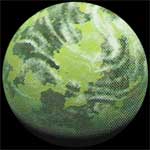Difference between revisions of "Rigel VI"
From Trekipedia
m |
m |
||
| Line 1: | Line 1: | ||
| − | [[File:rigel-06-stsc.jpg|350px|thumb|right|Rigel VI | + | [[File:rigel-06-stsc.jpg|350px|thumb|right|Rigel VI ([[Star Trek: Star Charts (Book)|STSC]]) |
| − | {| | + | {| |
| − | | | + | |+style="background-color:#000;text-color:#fff;"|<div align="left" style="color:#fff;margin-left:1em;">'''Planetary Data'''</div> |
|- | |- | ||
| Official Name: | | Official Name: | ||
| Line 9: | Line 9: | ||
| [[United Federation of Planets]]<ref name="STSC"/> | | [[United Federation of Planets]]<ref name="STSC"/> | ||
|- | |- | ||
| − | | | + | | Astrography: |
| [[Beta Rigel system|Beta Rigel]] VI,<ref name="STSC"/> [[Beta Quadrant]]<ref name="STSC"/> | | [[Beta Rigel system|Beta Rigel]] VI,<ref name="STSC"/> [[Beta Quadrant]]<ref name="STSC"/> | ||
| + | <!--|- | ||
| + | | Distance from Star: | ||
| + | | | ||
| + | |- | ||
| + | | Orbital Period: | ||
| + | | | ||
| + | |- | ||
| + | | Rotational Period: | ||
| + | | --> | ||
|- | |- | ||
| Class: | | Class: | ||
| [[Class M planet|M]]<ref name="STSC"/> | | [[Class M planet|M]]<ref name="STSC"/> | ||
| + | <!--|- | ||
| + | | Surface Temperature: | ||
| + | | | ||
| + | |- | ||
| + | | Diameter: | ||
| + | | | ||
|- | |- | ||
| − | | | + | | Gravity: |
| − | | | + | | |
| + | |- | ||
| + | | Natural Satellites: | ||
| + | | --> | ||
| + | <!--|- | ||
| + | | Notable Individuals: | ||
| + | | | ||
|- | |- | ||
| − | | Notable | + | | Notable Events: |
| − | | | + | | --> |
|} | |} | ||
]] | ]] | ||
| Line 25: | Line 46: | ||
The [[United Rigel Colonies]] include [[Rigel II]], [[Rigel IV]], [[Rigel V]], Rigel VI, & [[Rigel X]]. Rigel VI became part of the [[United Federation of Planets]] when the Rigel Colonies joined the Federation in 2202.<ref name="STSC"/> | The [[United Rigel Colonies]] include [[Rigel II]], [[Rigel IV]], [[Rigel V]], Rigel VI, & [[Rigel X]]. Rigel VI became part of the [[United Federation of Planets]] when the Rigel Colonies joined the Federation in 2202.<ref name="STSC"/> | ||
| − | == | + | {| |
| − | <references> | + | |+style="background-color:#000;text-color:#fff;"|<div align="left" style="color:#fff;margin-left:1em;">'''Related Data'''</div> |
| − | <ref name="STSC"> | + | |- |
| − | + | | Points of Interest: | |
| + | | [[New Burbank]], [[Starbase 134]], [[Starbase 134 Shuttle Integration Facility]], [[Rigel Cup Regatta]] | ||
| + | |- | ||
| + | | Notable Species: | ||
| + | | [[Humans]], [[Rigelians]] | ||
| + | |} | ||
| + | |||
| + | {| | ||
| + | |+style="background-color:#000;text-color:#fff;"|<div align="left" style="color:#fff;margin-left:1em;">'''References'''</div> | ||
| + | |- | ||
| + | |<references> | ||
| + | <ref name="STSC">[[Star Trek: Star Charts (Book)|''"Star Trek:'' Star Charts"]]. [[Star Trek (Miscellaneous)|''Star Trek'' (Miscellaneous)]]. Book. Simon & Schuster/Pocket Books, October 2002.</ref> | ||
| + | |} | ||
[[Category:Library]] | [[Category:Library]] | ||
Revision as of 08:35, 22 July 2018

Rigel VI (STSC)
| Official Name: | United Rigel Colonies[1] |
| Affiliation: | United Federation of Planets[1] |
| Astrography: | Beta Rigel VI,[1] Beta Quadrant[1] |
| Class: | M[1] |
The United Rigel Colonies include Rigel II, Rigel IV, Rigel V, Rigel VI, & Rigel X. Rigel VI became part of the United Federation of Planets when the Rigel Colonies joined the Federation in 2202.[1]
| Points of Interest: | New Burbank, Starbase 134, Starbase 134 Shuttle Integration Facility, Rigel Cup Regatta |
| Notable Species: | Humans, Rigelians |
| <references> |
- ↑ 1.0 1.1 1.2 1.3 1.4 1.5 1.6 "Star Trek: Star Charts". Star Trek (Miscellaneous). Book. Simon & Schuster/Pocket Books, October 2002.